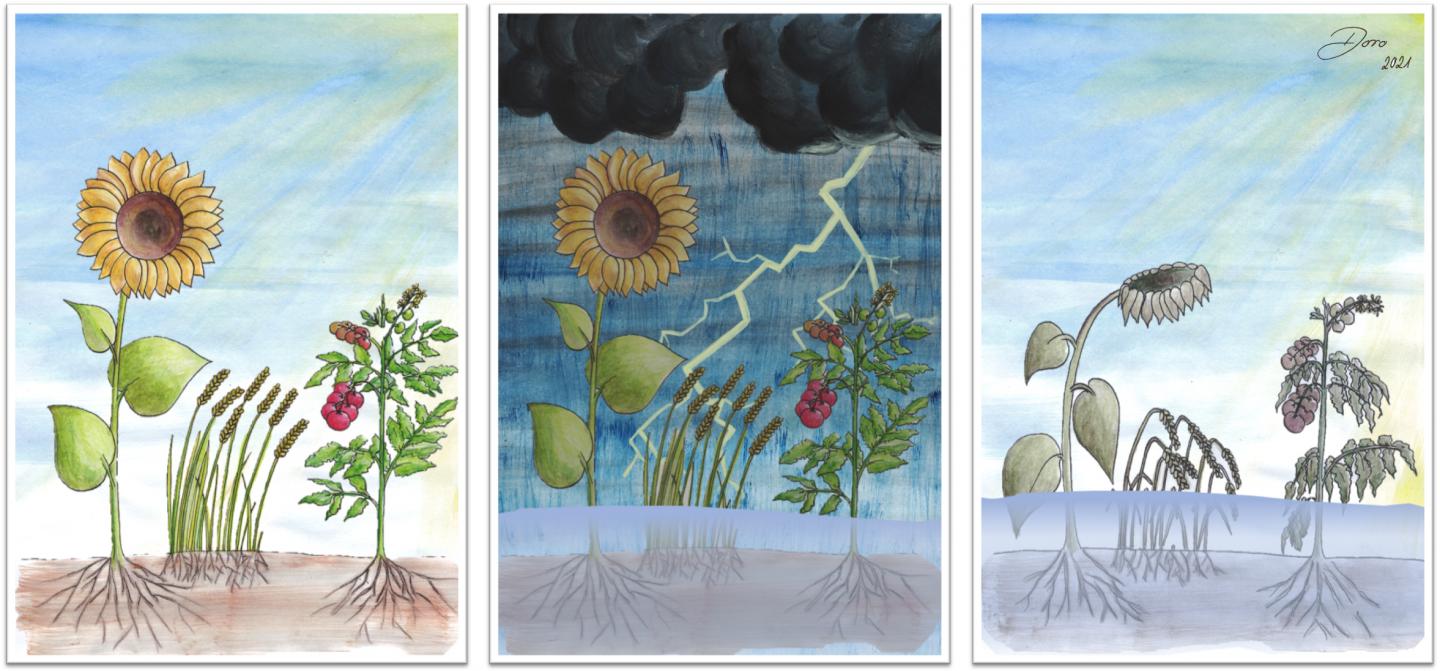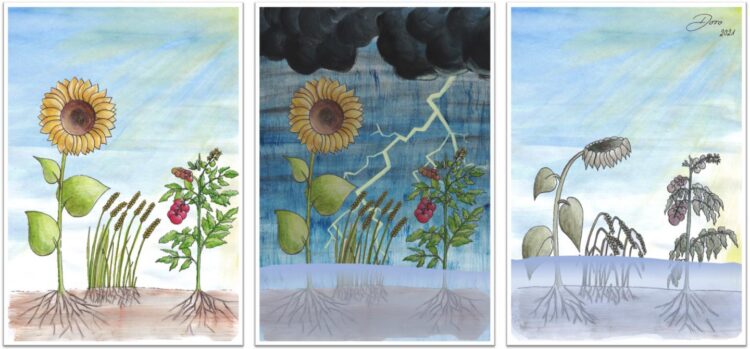
Credit: (Picture: Dorothea Graus / University of Wuerzburg)
Climate change is causing increased flooding and prolonged waterlogging in northern Europe, but also in many other parts of the world. This can damage meadow grasses, field crops or other plants – their leaves die, the roots rot.
The damage is caused by a lack of oxygen and the accumulation of acids. How do plants perceive this over-acidification, how do they react to it? This is what researchers from Würzburg, Jena (Germany) and Talca (Chile) describe in the journal Current Biology.
Biophysicists Dr. Tobias Maierhofer and Professor Rainer Hedrich from the Chair of Molecular Plant Physiology and Biophysics at Julius-Maximilians-Universität (JMU) Würzburg in Bavaria, Germany, were in charge of the study.
Anion channel recognises acidification
Everyone is probably familiar with the effect of over-acidification from their own experience: When exercising too hard, muscles are undersupplied with oxygen and acidosis occurs. Muscle pain and poor performance are the consequences.
“In plants, a lack of oxygen also causes acidification of the cells,” says Tobias Maierhofer. The team led by the JMU researcher has now discovered the sensor in the model plant Arabidopsis thaliana (thale cress) that perceives the acidification and translates it into an electrical signal. It is a protein in the cell membrane, the anion channel SLAH3.
Super-resolution microscopy clarifies structure
Professor Markus Sauer of the JMU Chair of Biotechnology and Biophysics has developed a microscopy method that can be used to look at proteins in high resolution. With the help of his methodology, the team was able to clarify how the anion channel SLAH3 reacts during acidification.
In the non-active state, the channel is present as a complex of two subunits in the cell membrane. With a lack of oxygen, the acidity and thus the proton content in the cell increases, and protons bind to two specific amino acids of the channel.
“This protonation changes the structure of SLAH3 and the channel breaks down into its two subunits,” explains Maierhofer, who is an expert on anion channels. As single copies, the two units now become conductive for anions, which leads to electrical excitation of the cell membrane.
Mutants react weaker to flooding
The electrical signal in turn triggers further reactions in the plant. Among other things, photosynthesis is reduced. “We assume that this is an adaptation to the flooding stress: the plants switch to a kind of resting state,” says Maierhofer.
The JMU researchers also investigated how Arabidopsis mutants lacking SLAH3 react to flooding. These plants did not try to reduce their photosynthetic output – even though photosynthesis is not possible at all in the muddy, murky flood water where too little light reaches the leaves.
Investigating genetic control during flooding
The anion channel SLAH3 can thus convert an acidification of the cell interior directly into an electrical signal. In this way, it functions like a pH sensor.
Next, the researchers want to investigate how the electrical signal is transported in the plant and translated into a stress-avoiding response. The necessary tools for this, such as pH-insensitive mutants, are available. This makes it possible to study in detail the genetic rerouting of the physiology of plants during flooding.
The results of this basic research could prove significant for agricultural practice: “With the knowledge we are gaining, we can take a targeted approach to breed crops that are more tolerant to waterlogging,” says JMU researcher Maierhofer.
###
Media Contact
Dr. Tobias Maierhofer
[email protected]
Original Source
https:/
Related Journal Article
http://dx.





